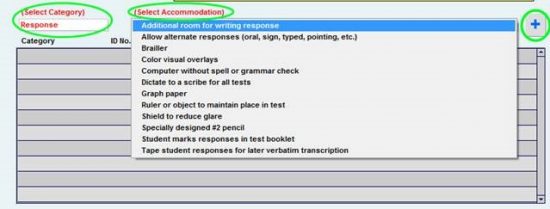Some teachers has a great idea and we are using it! Since Pupil Services sees so many goals and objectives throughout the year, and you all don’t get to see each others’, we are going to pick out the best of the best each month and share them with all of you! You may see one of yours. You may save these for when you are stuck. Either way, sharing is caring!
Goal: Given an opportunity and time to complete a task, Student will maintain an organized work space on 95% of the school days.
Objective 1: Given an opportunity and time to complete a task, Student will maintain an organized work space on 60% of the school days.
Objective 2: Given an opportunity and time to complete a task, Student will maintain an organized work space on 75% of the school days.
Objective 3: Given an opportunity and time to complete a task, Student will maintain an organized work space on 85% of the school days.
Goal: Student will independently complete a planner on a daily basis with 95% accuracy in filling in his daily homework, planning for long term assignments and prioritizing what he needs to complete.
Objective 1: With minimal assistance, Student will complete a planner on a daily basis with 90% accuracy in filling in his daily homework, planning for long term assignments and prioritizing what he needs to complete.
Objective 2: With minimal assistance, Student will complete a planner on a daily basis with 95% accuracy in filling in his daily homework, planning for long term assignments and prioritizing what he needs to complete.
Objective 3: Student will independently complete a planner on a daily basis with 95% accuracy in filling in his daily homework, planning for long term assignments and prioritizing what he needs to complete.
Goal: On a weekly basis, Student will independently review his grade reports to determine his current grade in each of his classes and if he is missing any work 100% of the time. He will write missing work into his planner and check it off as it is completed.
Objective 1: On a weekly basis and with minimal assistance, Student will review his grade reports to determine his current grade in each of his classes and if he is missing any work 90% of the time. He will write missing work into his planner and check it off as it is completed.
Objective 2: On a weekly basis and with minimal assistance, Student will review his grade reports to determine his current grade in each of his classes and if he is missing any work 95% of the time. He will write missing work into his planner and check it off as it is completed.
Objective 3: On a weekly basis, Student will independently review his grade reports to determine his current grade in each of his classes and if he is missing any work 100% of the time. He will write missing work into his planner and check it off as it is completed.
![]() Convene the IEP team because a decision to change placement must be made with team member input.
Convene the IEP team because a decision to change placement must be made with team member input.![]() Don’t base these decisions on administrative convenience. Schools need to have a continuum of placements that are available for students’ unique needs.
Don’t base these decisions on administrative convenience. Schools need to have a continuum of placements that are available for students’ unique needs.![]() Comply with the least restrictive provisions for the needs of each student.
Comply with the least restrictive provisions for the needs of each student.![]() Provide written notice of the change that includes an explanation of the changes that are to be made before actually implementing the changes
Provide written notice of the change that includes an explanation of the changes that are to be made before actually implementing the changes


